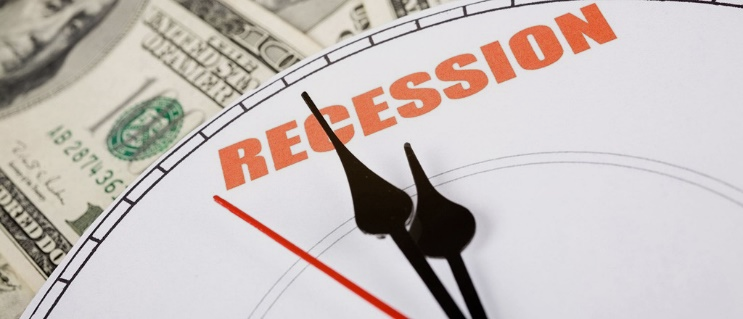Are We in a Recession?
Fear, greed and hope have destroyed more portfolio values than any recession or depression we have ever been through.
James O’Shaughnessy

Are we in a recession?
Many times, consumers and the person-on-the-street recognizes that the U.S. economy has entered a recession long before the economists declare it. That appears to be the case today. We’ve received the question recently, and after seeing the spike in “recession” Google searches, we know recession is a topic on the minds of many.
By the unofficial definition, yes, we are experiencing a recession. A recession is most often identified as two straight quarters of negative gross domestic product (GDP). Which has occurred during the first two quarters of 2022. The U.S Bureau of Economic Analysis announced that the U.S. GDP, the broadest measure of economic activity, declined at a 0.9% annualized rate in the second quarter of 2022. This follows a 1.6% annualized decline in the first quarter.
The U.S Bureau of Economic Analysis’s report noted a decrease in: retail trade, residential investment, and sluggish personal consumption expenditures. Which was perhaps triggered by surging inflation. Even so, the National Bureau of Economic Research (NBER), which is technically in charge of declaring recessions, has not yet made that declaration, and probably will not until the recession is over (believe it or not). The committee meets in secret, and often takes a year to decide whether it believes a recession has taken place.
However, the hesitation may be warranted this time. The NBER economists tend to look beyond GDP statistics, into the likes of company payrolls and consumer spending. Unlike most recessionary periods, the U.S. job market remains strong. The nation added more jobs in June than expected, and as the GDP announcement was coming out, applications for unemployment insurance had dropped. The unemployment rate is still at a nearly-unprecedented low of 3.6%. Also, consumer spending, while moderating, has grown during the first six months of the year.
Nevertheless, the signs and omens are fairly clear. The Federal Reserve has signaled that it plans to continue raising short-term interest rates, which will curb corporate spending and generally reduce economic vibrancy. Meanwhile, the most popular signal for an economic downturn—an inverted yield curve—is flashing brightly. Yield curve inversions are defined as times when you can get a higher yield on short-term bond than on longer-term issues—a counterintuitive situation that signals uneasiness about the future. As of today, people can get a 3.10% annualized yield on 6-month Treasury notes, but just 2.81% a year if they buy 10-year bonds.
As with every situation, we will carefully monitor what is occurring in the here-and-now. We do firmly believe in the power of long-term investing, while staying the course we have planned. Best said in our Investment Philosophy Synchronizer, “we believe time in the market, not timing the market, is the key to long-term investment success.”
Please follow us on Social Media:
Regards,
Warren D. Stribling, IV, CFP®
Principal
warren.stribling@striblingwhalen.com
Brian E. Whalen, CFP®, CIMA®, AIF®
Principal
brian.whalen@striblingwhalen.com
Jacob Beauchamp, AAMS®
Financial Advisor
jacob.beauchamp@striblingwhalen.com
Sources:
https://finance.yahoo.com/news/q-2-us-gdp-gross-domestic-product-economic-activity-123214911.html

